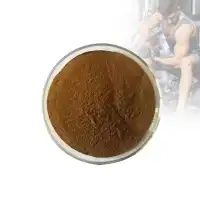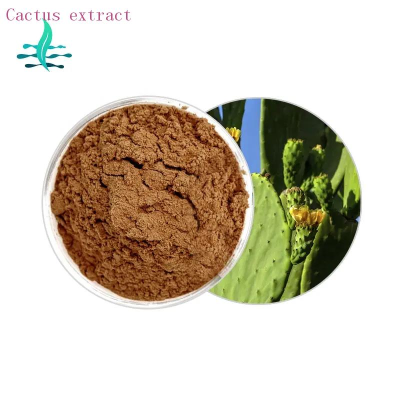Study on antibacterial activity of total flavonoids from peony leaves
-
Last Update: 2010-02-05
-
Source: Internet
-
Author: User
Search more information of high quality chemicals, good prices and reliable suppliers, visit
www.echemi.com
In the early stage, flavonoids were only used as natural yellow pigment in dyestuff In 1920s, quercetin and rutin were used in clinic abroad, which gradually attracted people's attention Scientists have studied and determined that flavonoids have a wide range of biological activities, such as antioxidant, free radical scavenging, anti-inflammatory, lipid regulation, anti-cancer, anti HIV and so on With the development of scientific research and technology, more and more attention has been paid to the inhibition and killing effect of flavonoids on microorganisms In recent years, the research has involved in the separation and extraction of flavonoids with antibacterial ability, the effect of flavonoids on microbial biological activity, the determination of antibacterial ability, and the structure-activity relationship of antibacterial effect Paeonia suffruticosa Andr Is a deciduous shrub of Paeonia group in Paeoniaceae It is an important ornamental and medicinal plant In recent years, the research on peony flower and cortex is increasing gradually, but there are few reports on peony leaf Therefore, the study on the antibacterial activity of total flavonoids in peony leaf can provide a theoretical basis for the application of peony leaf in food industry and pharmaceutical industry, and increase its resource utilization rate 1 Materials and methods 1 1 Total flavonoids of peony leaves 1 1 1 Peony leaves 2008-04 were collected in Luoyang Peony Square, species: hydrangea Firstly, the collected peony leaves are removed from the impurities, rinsed and dried, then dried in an electric constant temperature drying oven at 65 ℃ for 24 hours, crushed by a pulverizer, and screened through 40 meshes for standby 1.1.2 preparation of the crude extraction solution of total flavonoids accurately weigh about 1.0g of peony leaf powder, put it into a 250ml round bottom flask, add precisely 25 times the amount of 60% ethanol, heat it at 80 ℃ and reflux for extraction for 3h, filter it, centrifugate it, and fix the volume to 100ml with the corresponding concentration of ethanol for preparation The purity of flavonoids was 5.27% 1.1.3 macroporous adsorption resin is used to separate and purify the crude extract of total flavonoids from peony leaves The dry powder of peony leaves is extracted for 3 hours under the conditions of 60% ethanol, 80 ℃ and the ratio of material to liquid is 1:25 The filtrate is filtered by suction The filtrate is reduced to alcohol free under 50 ℃ in the rotating evaporator and ethanol is recovered The concentrated solution is dissolved in distilled water, and the volume is fixed The absorbance is measured, and the total flavone content is calculated Finally, a certain amount of concentrated solution is taken and then the volume is fixed in distilled water, so that the concentration is about 0.250mg/ml, and the diluent is obtained Weigh 8.0g of the pre-treatment macroporous adsorption resin respectively into 250ml triangular flask with stopper, add 240ml of sample solution, place at room temperature for 8h, filter, filter the resin, elute with distilled water, wash to no alcohol taste, then elute with 160ml of 70% ethanol solution for 6h, filter, rotate evaporation to concentrate the eluent, get the sample solution, for standby The purity of Flavonoids from HPD600 and d-101 resin was 15.11% and 17.60%, respectively 1.1.4 the ultrafiltration separation of Flavonoids from peony leaves is carried out by ultrafiltration equipment with cutting molecular weight of 10000da and membrane area of 50cm2 The purity of flavonoids was 40.58% 1.2 preparation of medium general nutrient agar medium: peptone 10g, beef extract 5g, sodium chloride 5g, agar 20g, distilled water 1000ml Lkgf.cm-2 was sterilized for 15 min 1.3 preparation of bacterial suspension the original strains of Escherichia coli, Bacillus subtilis and Salmonella were inoculated on the slant of general nutrient agar medium, cultured at 37 ℃ for 20-22h, and washed with 10ml sterilized normal saline for standby The above bacterial suspensions were respectively prepared with sterilized normal saline to form bacterial suspensions containing 106cfu.ml-1 bacteria 1.4 filter paper method is used for the determination of antibacterial activity 1.5 the minimum inhibitory concentration (MIC) was determined by double dilution method 2 Results 2.1 determination of bacteriostatic activity 2.1.1 the bacteriostatic activity of the crude extract of total flavonoids of peony leaves is shown in Table 1 Table 1 diameter of bacteriostatic circle of crude extract of total flavonoids from peony leaves to several microorganisms (omitted) it can be seen from table 1 that crude extract of total flavonoids from peony leaves has strong bacteriostatic effect on Escherichia coli, Bacillus subtilis and Salmonella It has a strong bacteriostatic effect on Salmonella The bacteriostatic effect on Bacillus subtilis is relatively weak 2.1.2 the antifungal activity of flavonoids isolated by HPD600 resin was measured The diameter of antifungal circle of flavonoids isolated by HPD600 resin was determined See Table 2 Table 2 diameter of bacteriostatic circle of flavonoids separated by HPD600 resin against several microorganisms (omitted) it can be seen from table 2 that the flavonoid separated by HPD600 resin has obvious bacteriostatic effect on Escherichia coli, Bacillus subtilis and Salmonella, especially on Salmonella The antibacterial effect on E coli is relatively weak 2.1.the antibacterial activity of flavonoids isolated by d-101 resin was measured, and the diameter of antibacterial circle of flavonoids isolated by d-101 resin was determined See Table 3 Table 3-101 diameter of bacteriostatic circle of flavonoids separated by resin for several microorganisms (omitted) It can be seen from table 3 that flavonoids separated by resin d-101 has bacteriostatic effect on Escherichia coli, Bacillus subtilis and Salmonella It has a strong bacteriostatic effect on Salmonella The antibacterial effect on E coli is relatively weak 2.1.4 the antibacterial activity of Flavonoids from ultrafiltration separation was measured, and the diameter of antibacterial circle of Flavonoids from ultrafiltration separation for different bacteria was determined See Table 4 Table 4 diameter of bacteriostatic circle of ultrafiltration flavonoids on several microorganisms (omitted) It can be seen from table 4 that ultrafiltration flavonoids have bacteriostatic effect on Escherichia coli, Bacillus subtilis and Salmonella It has a strong bacteriostatic effect on Salmonella The antibacterial effect on E coli is relatively weak 2.2 determination of minimum inhibitory concentration (MIC) (double dilution method) 2.2.1 determination of minimum inhibitory concentration (MIC) of crude extract of total flavonoids from peony leaves see Table 5 Table 5 the minimum inhibitory concentration (omitted) of the crude extract of total flavonoids from peony leaves to several microorganisms table 5 shows that the crude extract of total flavonoids from peony leaves has a strong antibacterial effect on bacteria, with MIC values of 5.08mg/ml for Escherichia coli, 2.54mg/ml for Bacillus subtilis and 1.27mg/ml for Salmonella 2.2.2 the minimum inhibitory concentration (MIC) of flavonoids separated by HPD600 resin is shown in Table 6 Table 6 the minimum inhibitory concentration of flavonoids isolated by HPD600 resin to several microorganisms (omitted) table 6 shows that flavonoids isolated by HPD600 resin have strong antibacterial effect on bacteria, MIC values are: Escherichia coli 4.92mg/ml, Bacillus subtilis 2.46mg/ml, Salmonella 1.23mg/ml 2.2.3d-101 resin separation minimum inhibitory concentration (MIC) of flavonoids see Table 7 for the determination results of d-101 resin separation minimum inhibitory concentration (MIC) Table 7 the minimum inhibitory concentration (omitted) of flavonoids isolated by d-101 resin to several microorganisms table 7 shows that flavonoids isolated by d-101 resin have strong antibacterial effect on bacteria, MIC values are: Escherichia coli 3.13mg/ml, Bacillus subtilis 3.13mg/ml, Salmonella 0.39mg/ml 2.2.4 determination of minimum inhibitory concentration (MIC) of Flavonoids from ultrafiltration see Table 8 for the determination results of minimum inhibitory concentration (MIC) of Flavonoids from ultrafiltration Table 8 the minimum inhibitory concentration of Flavonoids from ultrafiltration on several microorganisms (omitted) table 8 shows that flavonoids from ultrafiltration have strong antibacterial effect on bacteria, MIC values are respectively: Escherichia coli 4.048mg/ml, Bacillus subtilis 4.048mg/ml, Salmonella 1.012mg/ml 3 conclusion The total flavone of peony leaf has a certain inhibitory effect on three kinds of bacteria, of which the inhibitory effect on Salmonella is the most significant and the inhibitory effect on Escherichia coli is relatively weak; the MIC of ethanol extract to three kinds of bacteria is 5.08mg/ml for Escherichia coli, 2.54mg/ml for Bacillus subtilis and 1.27mg/ml for Salmonella respectively; the concentration of HPD600 macroporous adsorption resin separation is the most significant The MIC values of three kinds of bacteria were as follows: Escherichia coli 4.92mg/ml, Bacillus subtilis 2.46mg/ml, Salmonella 1.23mg/ml; the MIC values of d-101 macroporous adsorption resin for three kinds of bacteria were as follows: Escherichia coli 3.13mg/ml, Bacillus subtilis 3.13mg/ml, Salmonella 0.39mg/ml; the MIC values of ultrafiltration process for three kinds of bacteria were as follows: Escherichia coli 4.048mg/ml, kudu Bacillus subtilis 4.048mg/ml, Salmonella 1.012mg/ml The MIC of the four sample solutions also showed that: the total flavonoids of peony leaf had a certain inhibitory effect on three kinds of bacteria, especially on Salmonella The results showed that flavonoids from peony leaf is a good inhibitor of Salmonella, but which flavonoid is active remains to be further studied The inhibitory effect of flavonoids extracted from peony leaves on Escherichia coli and Bacillus subtilis is stronger than that of flavonoids isolated and purified There may be other components that inhibit the two kinds of bacteria, and the mechanism of action remains to be further revealed [reference] [1] Wang Yuling, Zhang Yan, Fang Ming, et al The anti-inflammatory and antibacterial effects of total flavonoids of Hedyotis diffusa [J] Chinese Pharmacological Bulletin, 2005,21 (3): 348 [2] Zhang Cunli, Zhu Wei, Wang Dongmei, et al Study on the antibacterial activity of Smilax China l root extract [J] Northwest botanical journal, 2005,25 (12): 2529 [3] Zhang Hongyan, Dong Liuyi, Jiang Qin, et al Anti infective oral mucosal ulcer and in vitro antibacterial effect of total flavonoids of huangshusunflower [J] Anhui medicine, 2006,10 (11): 810 [4] Li Dinggang, Zhang Wugang, song Yumin, et al Study on antibacterial active components of Viola yedoensis [J] Journal of Northwest Agricultural and Forestry University of science and Technology (NATURAL SCIENCE EDITION), 2006,34 (4): 87 [5] Lei Qi, Zhuang Donghong, Wu Yirui Study on the best extraction conditions and bacteriostasis of total flavonoids in guava leaves Research and development of natural products, 2006,18 (B06): 107 [6] Zhu Dan, Niu Guangcai, sun Xiyun, et al Study on Bacteriostasis of Portulaca flavonoids [J] Anhui Agricultural Science, 2006,24 (1): 7 [7] Chen Naidong, Zhou Shoubiao, Luo Qi, et al Study on the effect of different extractants on the content of flavonoids and their antimicrobial activities in Lespedeza chunhuaensis Chinese Journal of health inspection, 2007,17 (2): 193 [8] pazleti baiheti, wenxuemei, abudura Abbas Separation and extraction of total flavonoids and polysaccharides from Rhodiola in Xinjiang and preliminary Study on their antimicrobial activities [J] Food science, 2006, 27 (7): 114 [9] Li Yikui Experimental methodology of pharmacology of traditional Chinese medicine [M] Shanghai: Shanghai Science and Technology Press, 1991:286
This article is an English version of an article which is originally in the Chinese language on echemi.com and is provided for information purposes only.
This website makes no representation or warranty of any kind, either expressed or implied, as to the accuracy, completeness ownership or reliability of
the article or any translations thereof. If you have any concerns or complaints relating to the article, please send an email, providing a detailed
description of the concern or complaint, to
service@echemi.com. A staff member will contact you within 5 working days. Once verified, infringing content
will be removed immediately.







